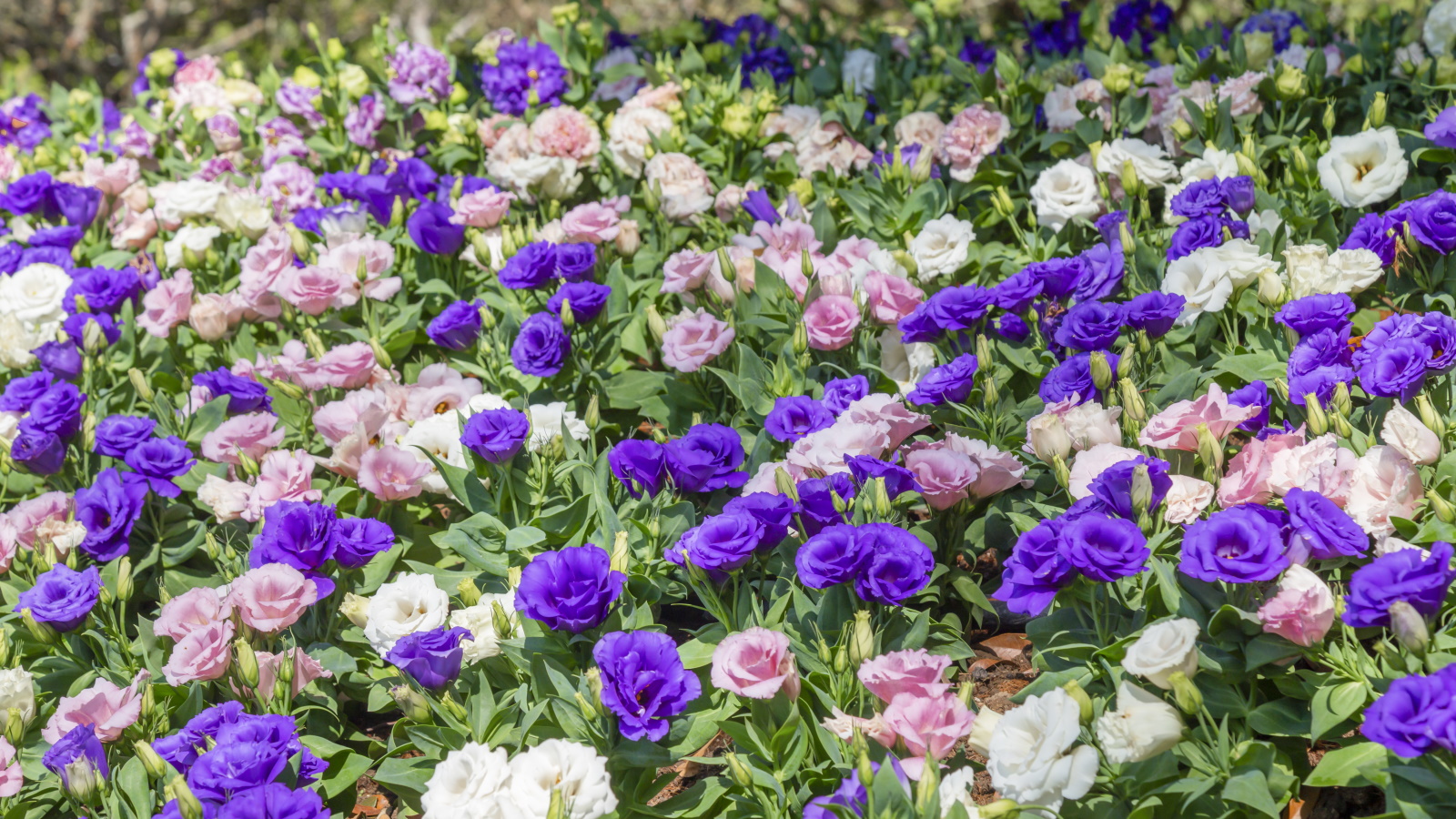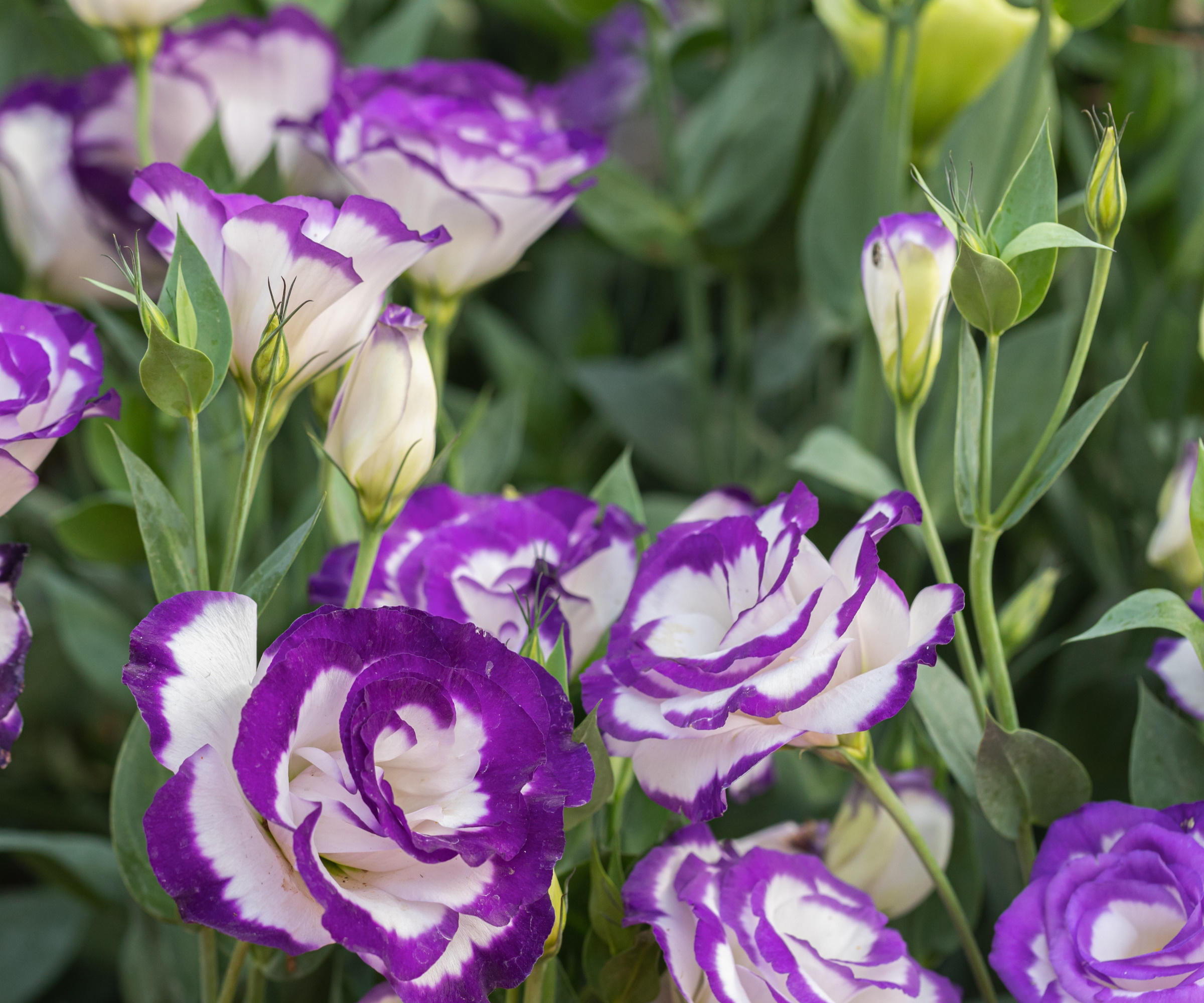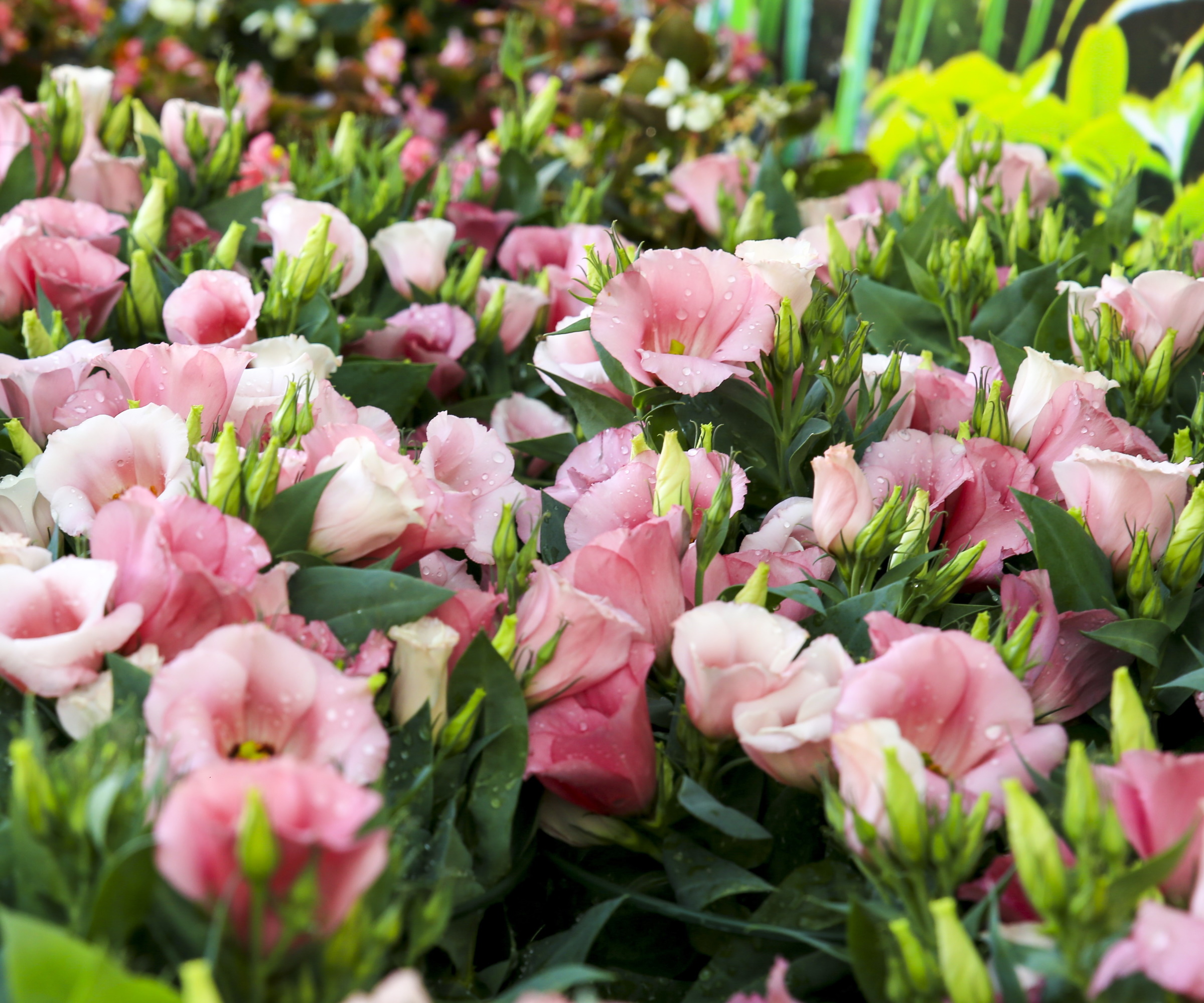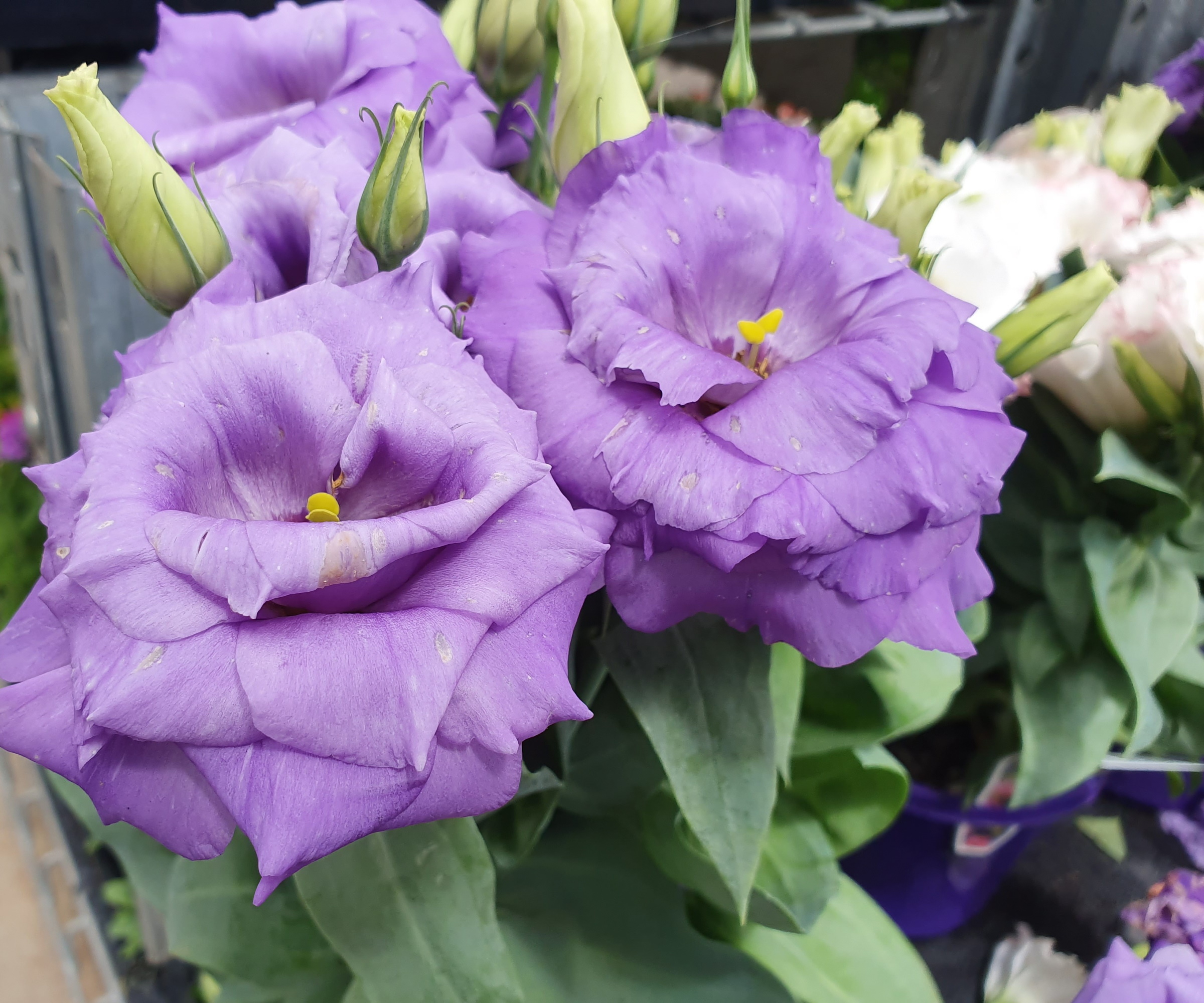
Lisianthus, Eustoma russellianum, are popular cut flowers that add color and beauty to indoor vase displays or wedding bouquets. It is hard not to fall in love with these bell-shaped blooms, found growing in a vast spectrum of shades including pink, white, purple, and yellow. While lisianthus might be a regular sight in the local florist or superstores, did you know that it is possible to grow these perennial plants at home in the yard?
Native to Central and North America, lisianthus has many other common names, including the prairie gentian and the Texas bluebell. These names might give a clue as to where this plant is found in the wild, notably growing across the Great Plains and prairies in Wyoming, Nebraska, Colorado, Kansas and Texas.
Lisianthus has a reputation as one of the most difficult perennials to grow, and while growing these plants can be challenging, there are steps you can take to give your lisianthus blooms the best chance of success. Here, professional gardeners share top tips and advice for these native blooms.

How to grow lisianthus
If you are planning a cut flower garden, incorporating native blooms is a great way to encourage local pollinators such as bees and butterflies. Lisianthus plants grow to about 1 to 3 feet tall, producing dark green foliage with upright, bell-shaped blooms in the summer months.
Things to know about lisitanthus

'Lisianthus are versatile and impactful flowers,' says Rachel Bull, head of gardens at Homes & Gardens and a floral designer. 'Whether you choose to enjoy them in garden borders, containers or vases, lisianthus are colorful and elegant blooms, wherever they appear.'
Native to Central and North America, lisianthus plants are best suited to conditions found in US hardiness zone 7 to US hardiness zone 10. For this reason, they are typically grown as annuals due to their tender nature, but in equatorial regions, they can be grown as perennials. As a prairie planting flower, lisianthus is well suited to full-sun but moisture-retentive soil. Think open grasslands with slightly damp soils.
'As a florist, I love using lisitanthus in bouquets and boutonnieres. Not only are the bell-shaped flowers decorative and romantic, but they are also long-lasting, often looking good for 14 days.
'These plants have a reputation for being slightly tricky to grow,' Rachel adds. 'While it is true that growing lisianthus from seed is challenging, with a complicated germination process, growing this plant from smaller plug plants is much more straightforward.'
Lisianthus are hugely popular flowers to place in a vase. These live plants will grow quickly if planted in full-sun.
Growing advice for lisianthus

- Soil: These short-lived perennials do best in rich, moist soil. Plant lisianthus in borders or containers that have been conditioned with mulch or leaf mold, such as this organic soil, available from Amazon. Lisianthus do best in soils with a pH of 6.5 and 7.0. If you are unsure of your soil pH, use a soil meter, available from Walmart. 'It is best to plant lisianthus in the early spring, usually 1 month before your last frost is expected,' Rachel says. 'Cold weather will help them establish, and planting later in warm weather is risky as plants can scorch or dry out.'
- Light: Lisianthus plants need plenty of sunshine. Native to wide-open prairie fields and grasslands, these plants do not do well in shade. 'I recommend planting in a position that enjoys 6 to 8 hours of direct sun each day,' Rachel adds, 'which will give you plants the best chance of success.'
- Watering: These plants thrive in moist but well-draining soil. In dry regions, deep watering once or twice a week will help your plants to thrive. Applying a mulch layer can help to preserve water in the soil, which is important during the summer months.
- Fertilizing: Lisianthus are hungry plants. I recommend using a fertilizer high in phosphorus that will encourage flowering, such as this bloom booster, available from Amazon. One common fertilizing mistake is applying an unsuitable feed. While plant fertilizer numbers can seem complicated, it is good to do some research to know what fertilizer you need. In the case of lisianthus, using phosphorus is recommended for flower production. Applying a feed high in nitrogen would encourage green growth and new foliage, which would not be the desired outcome when growing plants for cut flower arrangements.
- Staking: 'For those gardeners who want to grow lisianthus for cut flowers, staking is an important job to add to your summer gardening checklist,' says Rachel. 'Flower stems can reach 2 to 3 feet tall, so providing some support is essential.' Why not build hazel plant supports, for a subtle and decorative structure in your borders?
This organic fertilizer will assist all of your flowering plants to produce plenty of buds and go on flowering long into the fall.
FAQs
Can I grow lisianthus in a container?
Yes, lisianthus can be grown as a pot plant. I recommend finding a variety suited to container growing, such as one of the many dwarf varieties like 'sapphire white'. Position your container in a sunny spot and water frequently during the spring and summer. Regularly deadheading and cutting flower stems will mean that your plant will produce blooms for several weeks.
For all levels of gardener, I recommend growing lisianthus plants that are purchased from garden stores and nurseries. In particular, this is much simpler for those gardeners looking to grow lisianthus for the first time. For more cut flower growing advice, see our guide on how to keep snapdragons flowering, for another superb plant both in the garden and in a vase.







